Winds and global circulation
Winds and global circulation
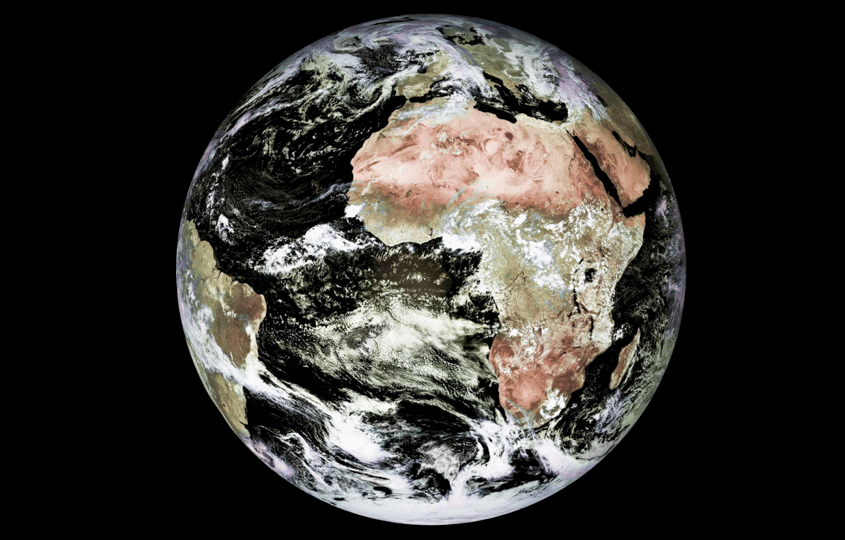
A snapshot of METEOSAT shows regions of the Earth with substantial cloud cover and other regions with clear skies (Photo: ESA)
Learning Objectives
- Explain what causes wind
- Describe the forces that initiate and modify winds
- Explain what causes certain regions of our planet to be dry and cloudless while others are wet and cloudy
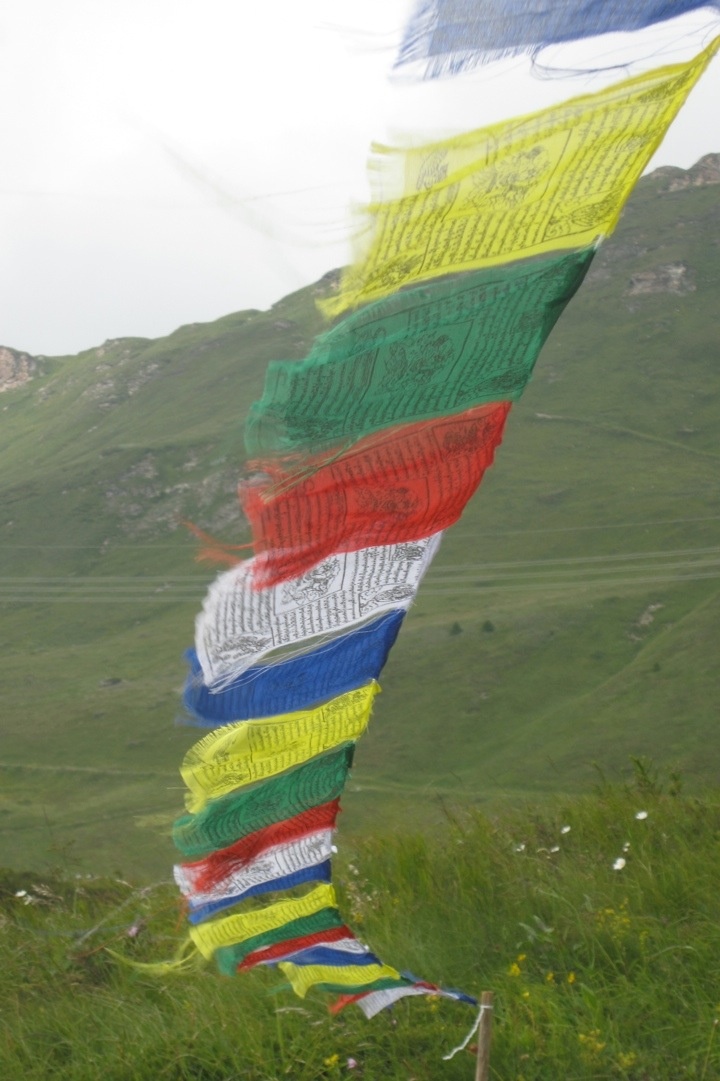
Why does the wind blow?
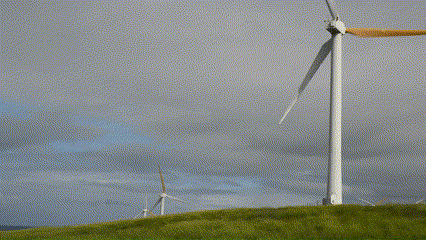
Why does the wind blow?
Three main factors affect the horizontal motion of the air:
- Pressure gradient force: drives flow
- Coriolis effect: “deflects” flow
- Friction: slows flow
The velocity (speed and direction) of the wind at any time is the result of these three vector forces.
Atmospheric Pressure \(P_a\)
- Recall: \(P_a\) decreases exponentially with height
- \(P_a \approx\) Weight of the air
- Following the ideal gas law, \(P_a\) is a function of temperature and density
\[ PV=nRT \qquad(1)\]
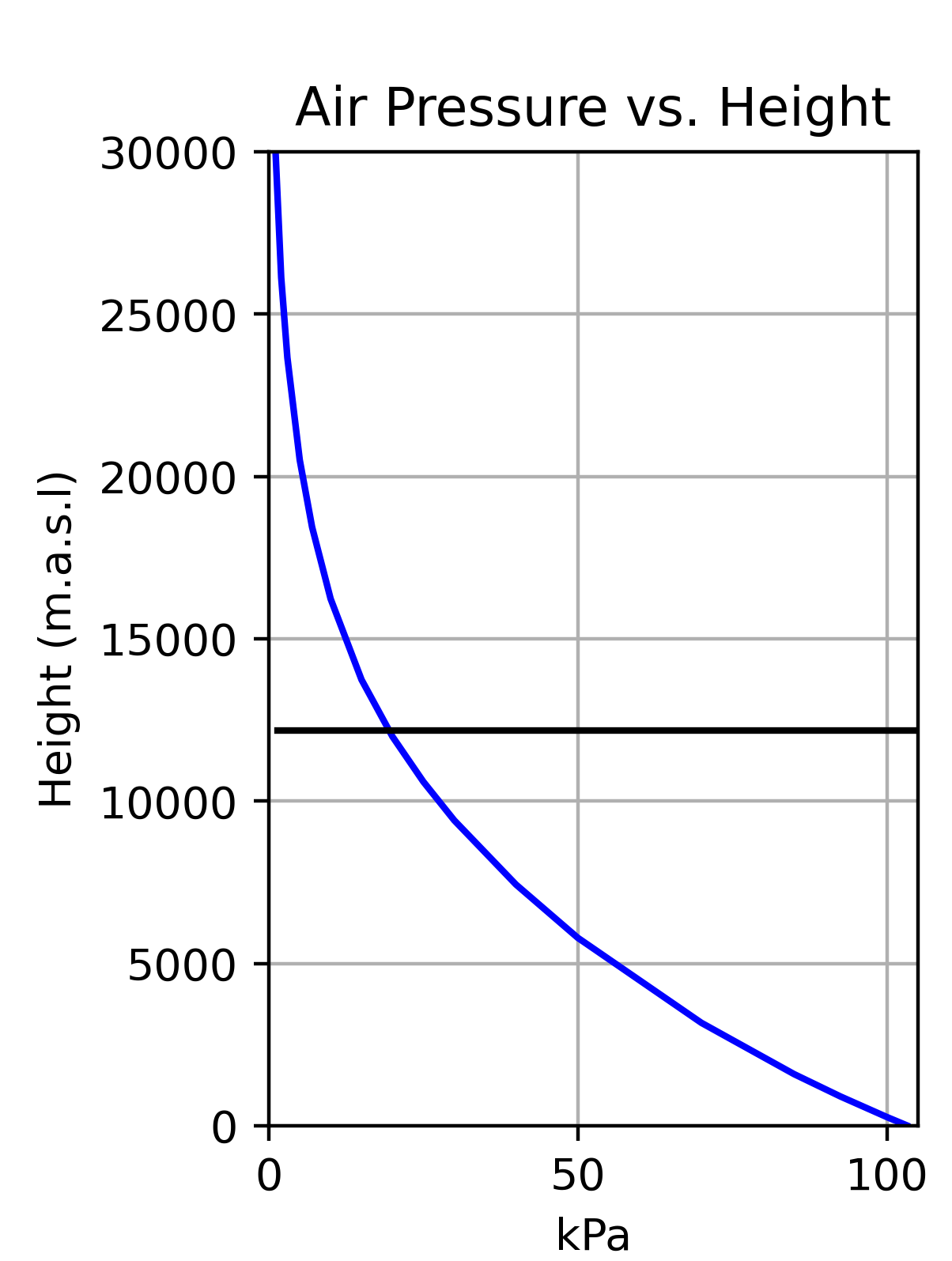
Atmospheric Pressure (iClicker)
What happens if we warm up a column of air? Assume there is no horizontal flow.
- A The air contracts, the column shrinks
- B The air expands, the column stretches
- C The column does not change
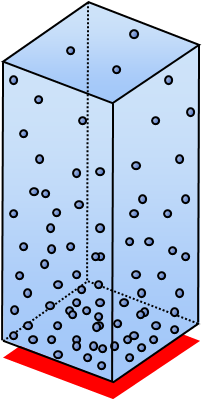
Atmospheric Pressure (iClicker)
In this scenario the column expands:
- \(rho\) decreases
- \(P_a\) (at the surface) remains the same
- Mass of air above surface does not change
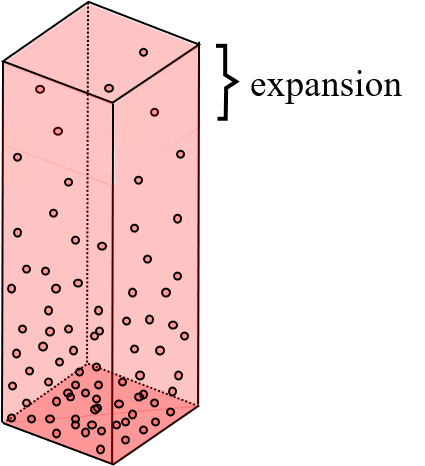
Atmospheric Pressure \(P_a\)
\(P_a\) is not uniform across the Earth’s surface.
- High (H): areas with relatively high \(P_a\) at sea level
- Low (L): areas with relatively low \(P_a\) at sea level
- Lines of equal pressure on a map are called isobars.

Atmospheric Pressure \(P_a\)
\(P_a\) is not uniform across the Earth’s surface.
- High (H): areas with relatively high \(P_a\) at sea level
- Low (L): areas with relatively low \(P_a\) at sea level
- Lines of equal pressure on a map are called isobars.
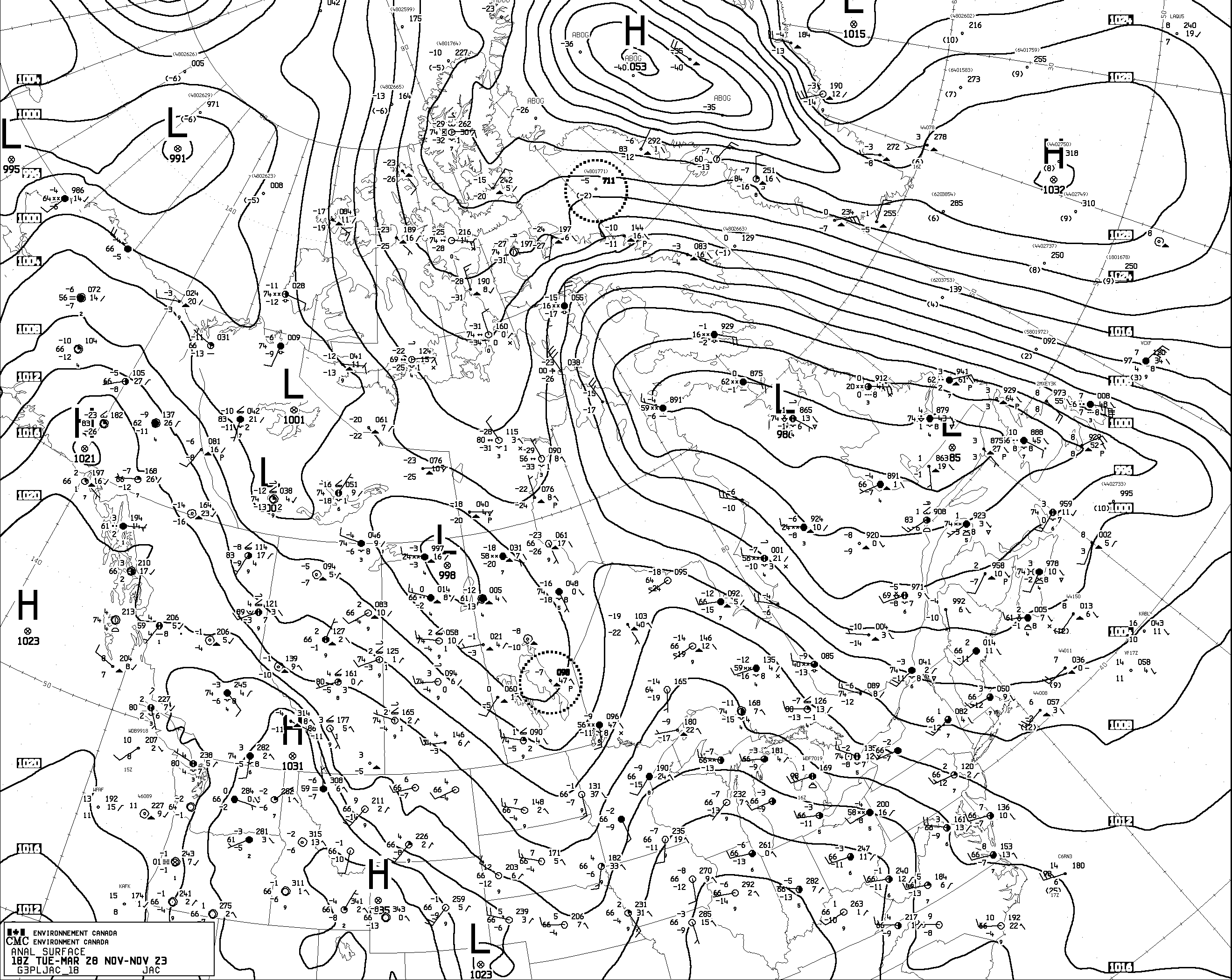
Pressure Gradient Force
Air flows from higher to lower pressure. This is the main driving force for winds.
- Speed set by spacing of the isobars
- i.e. the pressure gradient
- Acts at right angles to the isobars.
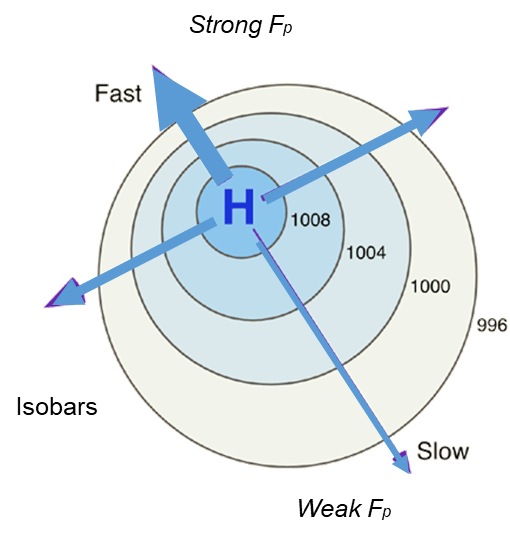
Creating a Pressure Gradient
What happens if we warm up the middle column of air?
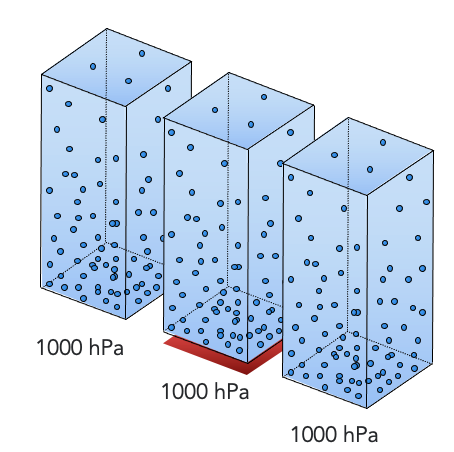
Creating a Pressure Gradient
What happens if we warm up the middle column of air?
- The warmed column expands creating a pressure gradient aloft
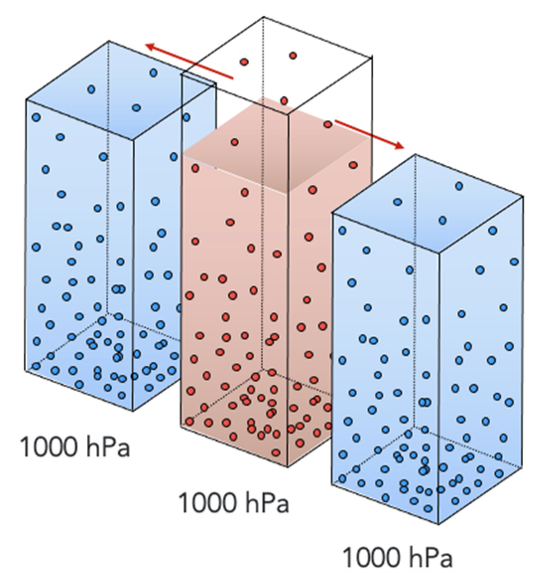
Creating a Pressure Gradient
Winds redistribute mass to equalize the gradient
- Divergence of mass aloft will reduce \(P_a\) at surface
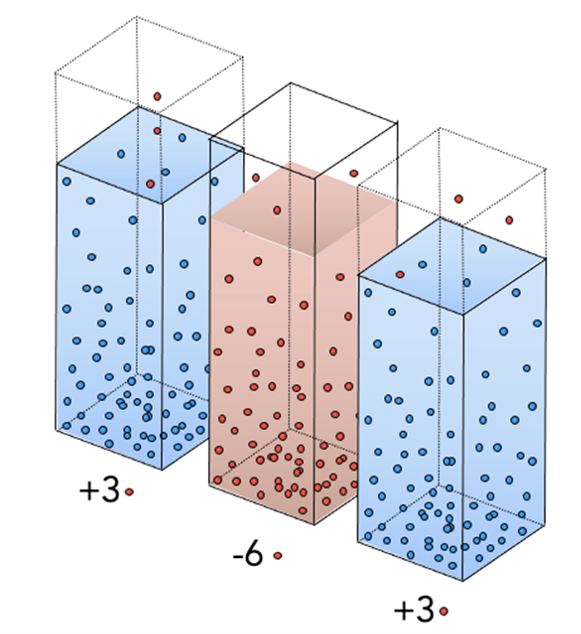
Creating a Pressure Gradient (iClicker)
Which air column experiences the lower pressure at sea level?
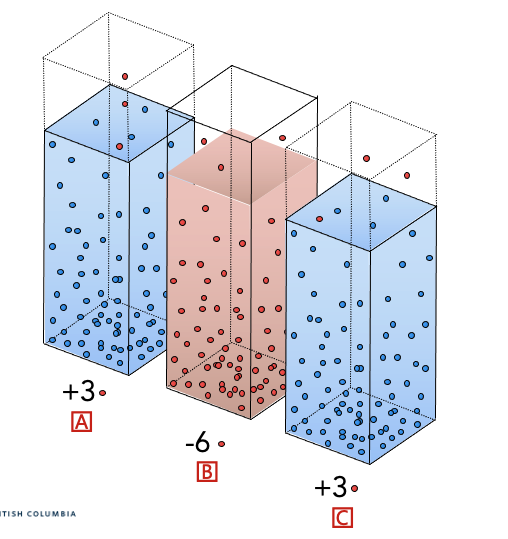
Thermal Lows
- Heating causes expansion
- Divergence aloft reduces surface pressure
- This is a thermal low
- Creates a pressure gradient at the surface
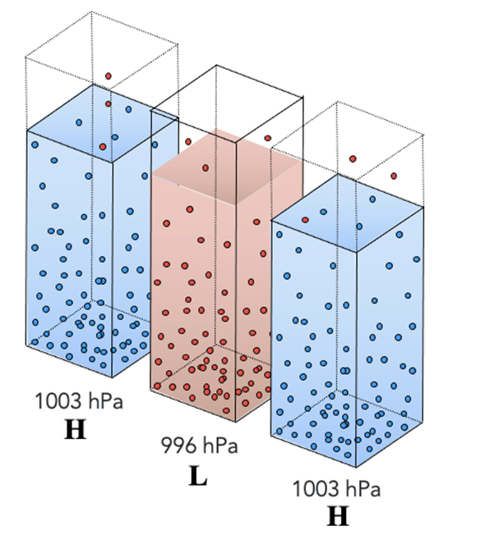
Thermal Lows
- Common in equatorial regions and over large continents during summer
- Responsible for trade winds and monsoons
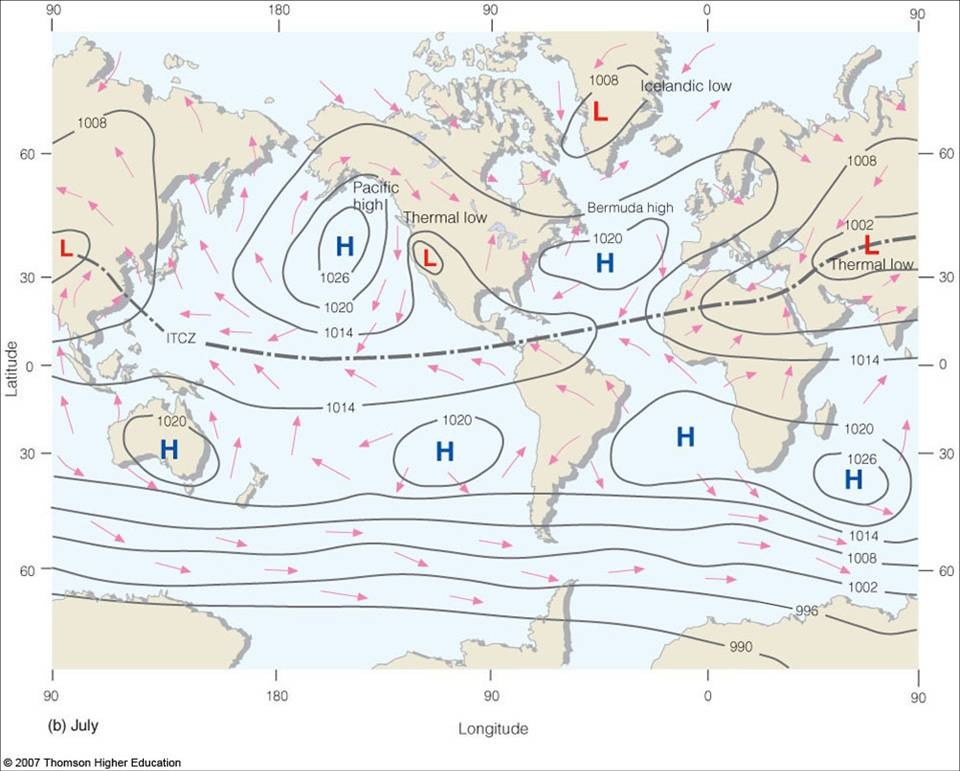
Creating a Pressure Gradient
What happens if we cool down the middle column of air?
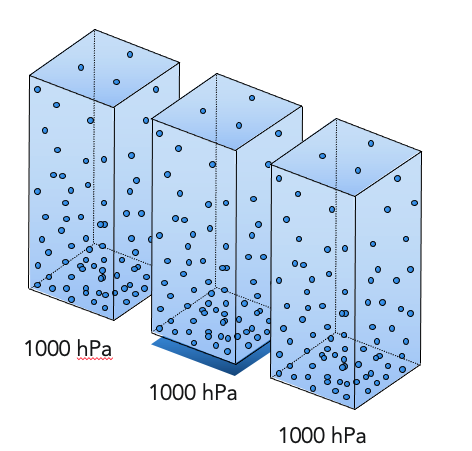
Creating a Pressure Gradient
What happens if we cool down the middle column of air?
- The cooled column compresses creating a pressure gradient aloft
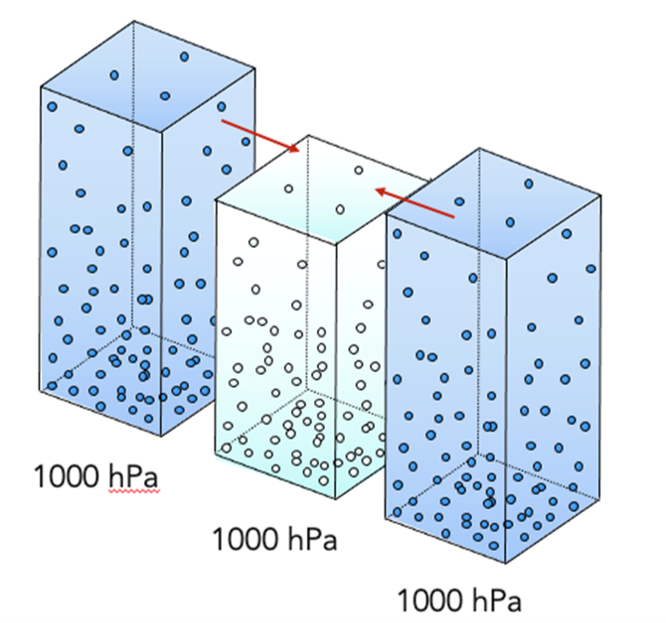
Creating a Pressure Gradient (iClicker)
Which air column experiences the higher pressure at sea level?
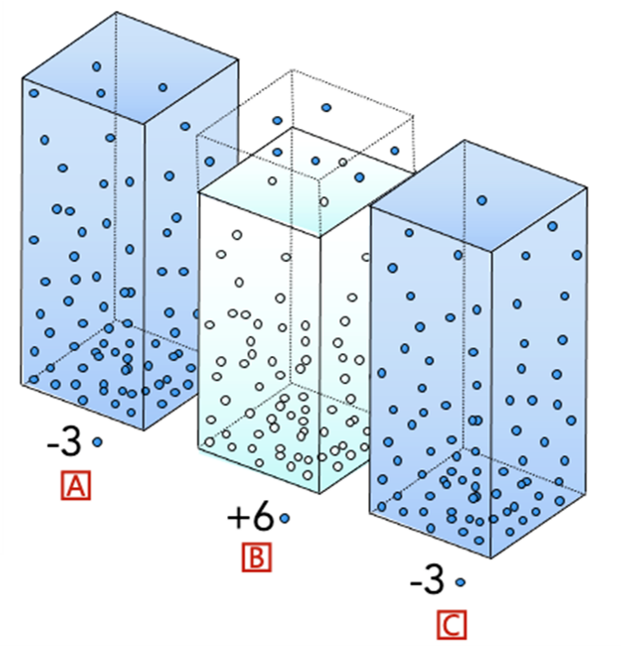
Thermal Highs
- Cooling causes compression
- Convergence aloft increases surface pressure
- This is a thermal high
- Creates a pressure gradient at the surface
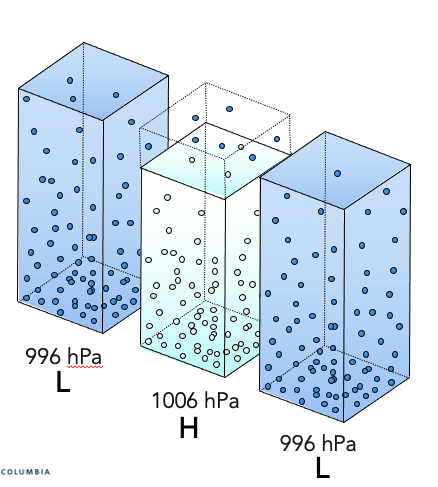
Thermal Highs
- Common in polar regions and over large continents during winter
- Typically located over Siberia and Canada in winter
- Responsible for persistent windy conditions in the prairies
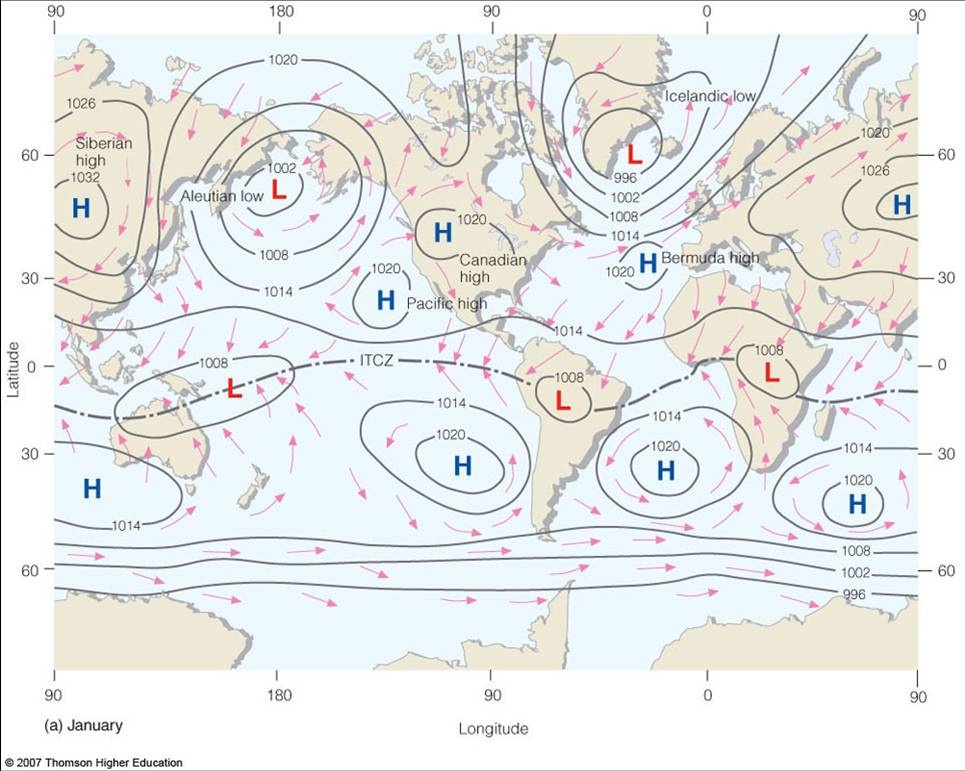
Semi-Permanent Highs and Lows
Semi-permanent High and Low pressure systems occur in preferred locations (e.g. Hawaiian, Bermuda, Siberian Highs; Aleutian, Icelandic Lows)
- Patterns are clearer in the Southern Hemisphere because the distribution of land-sea is simple
- Pay-to-day these systems tend to move continuously (in the mid-latitudes typically from west to east)
Coriolis Effect
An apparent force due to the rotation of Earth.
- Rotation of the Earth’s around its axis “deflects” winds
- Primary reason flow is not parallel to isobars
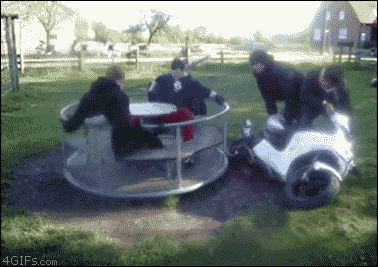
Coriolis Effect
An apparent force due to the rotation and curvature of Earth.
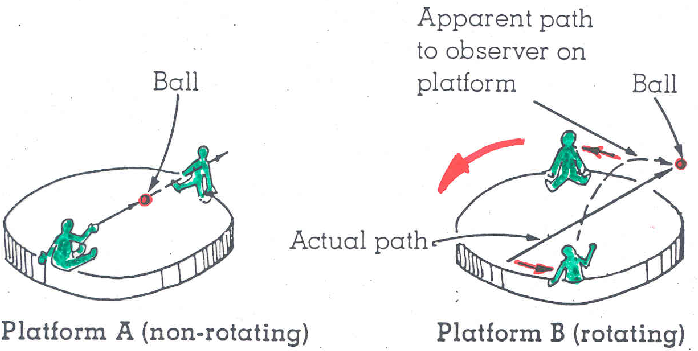
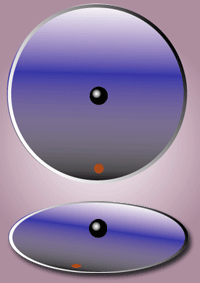
Coriolis Effect
A function of wind speed (\(V\)), Earth’s rotational velocity (\(\Omega\)), and latitude (\(\phi\)):
\[ F_c = 2V\Omega sin \phi \qquad(2)\]
- Deflects flow to the right (left) in the N (S) Hemisphere
- Strongest at the poles, zero at the equator
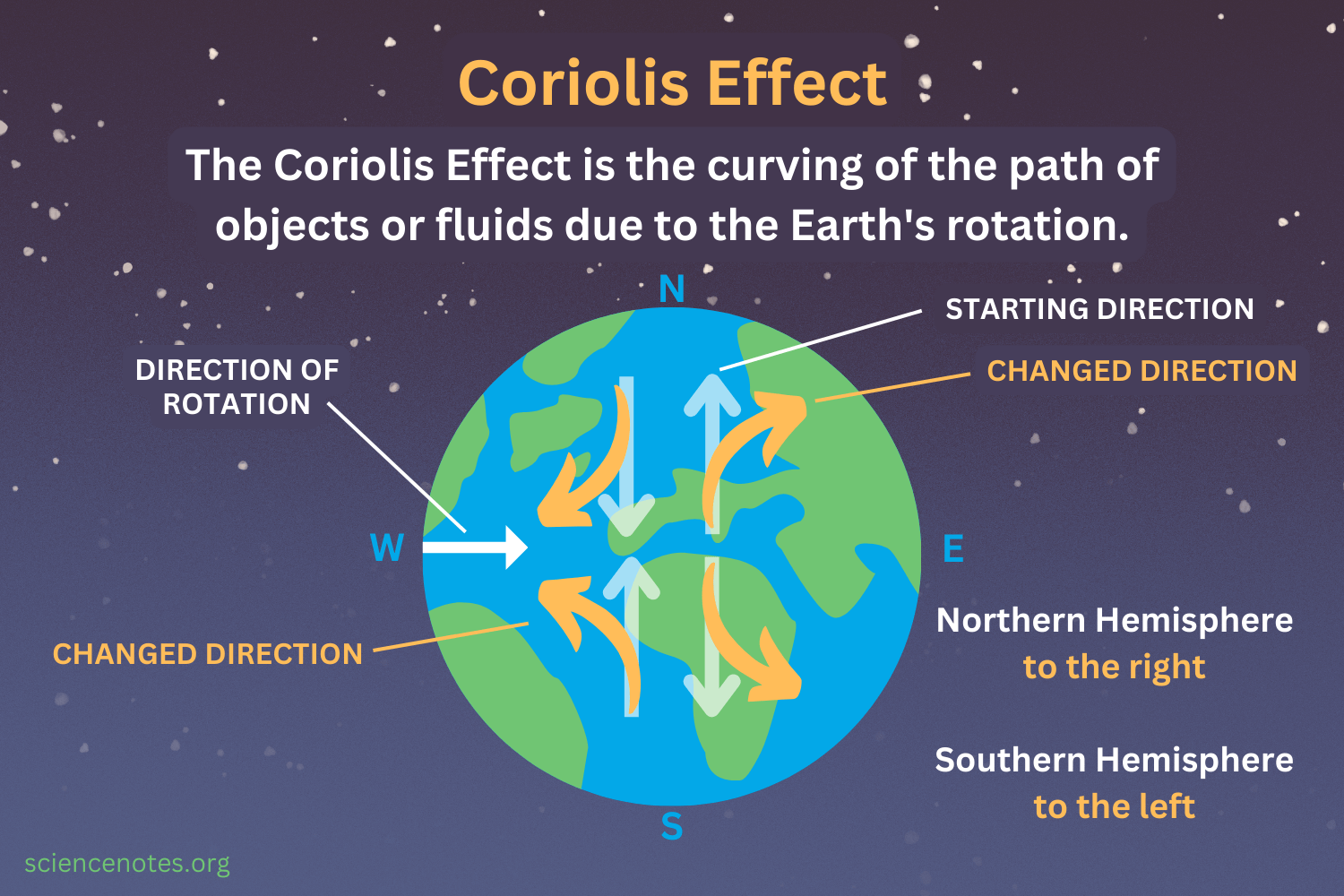
Coriolis Effect (iClicker)
All else equal, at which Latitude would the Coriolis effect be the strongest?
- A 10 \(^\circ\) N
- B 20 \(^\circ\) S
- C 50 \(^\circ\) N
- D 65 \(^\circ\) S
Heating on a global scale
Lower latitudes show a radiative surplus, the higher latitudes show a radiative deficit. Global wind system is driven by unequal heating of the Earth by the Sun.
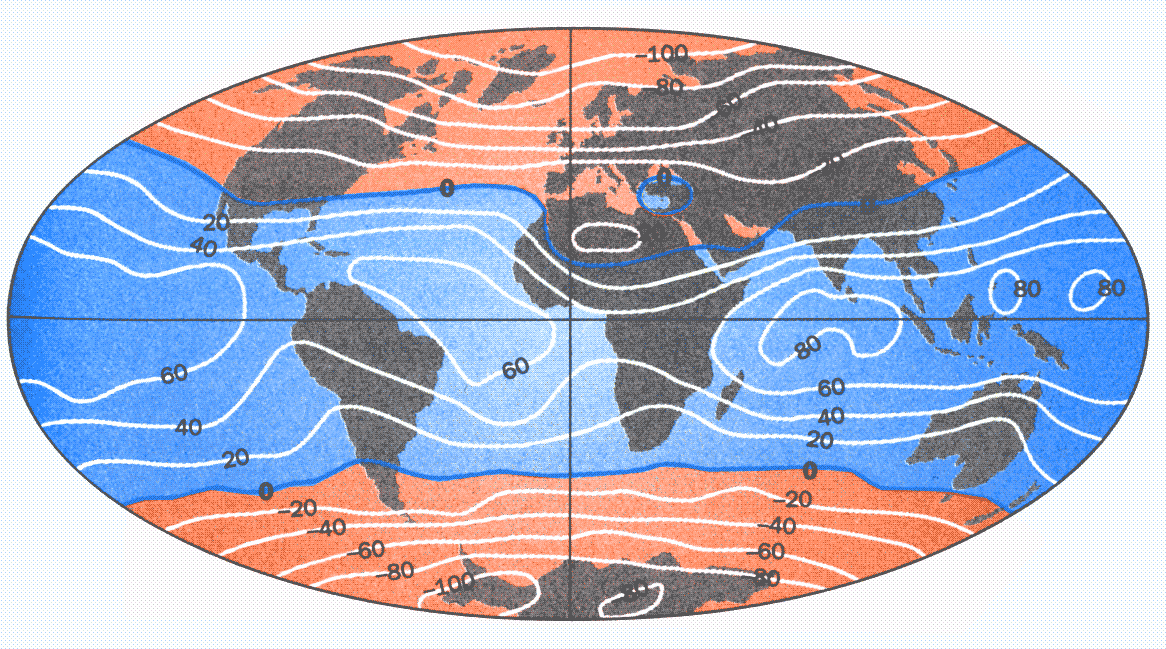
The Three-Cell Model
Poleward transport of energy aims to “correct” the imbalance. Winds are deflected by Coriolis force, resulting in trade winds, westerlies, and polar easterlies.
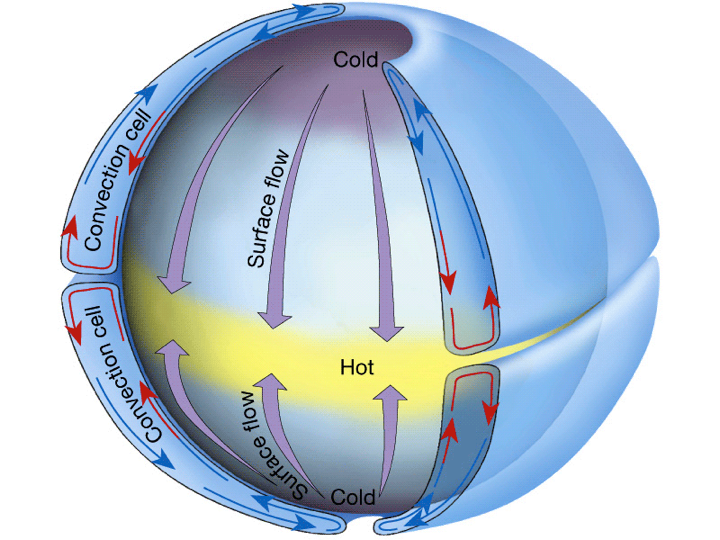
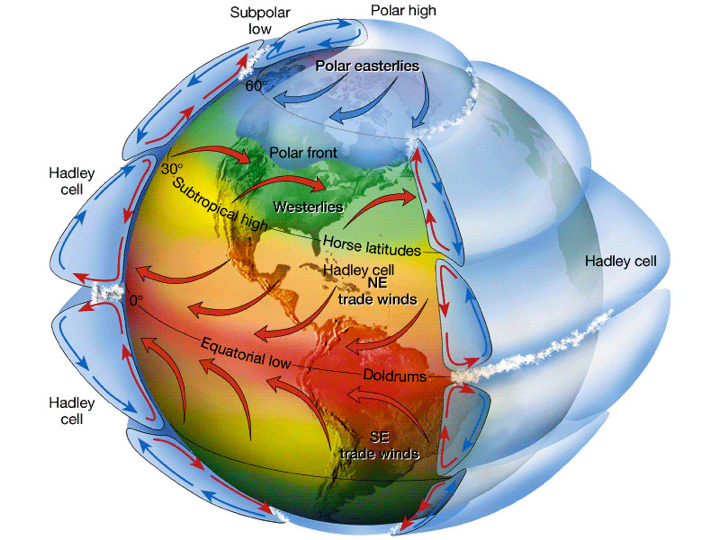
The Three-Cell Model
The three cells form bands of uplift (cloudy, stormy, wet) around Equator (ITCZ = Inter Tropical Convergence Zone) and Polar front and subsidence (cloud-free, dry) in Sub-tropical desert belt and Poles.
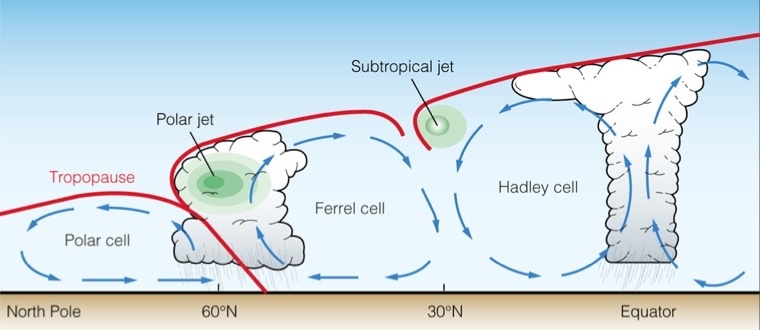
The Three-Cell Model
The three-cell model describes “average” global circulation patterns, but in reality there are seasonal and longitudinal variations due to the change in the Sun’s position and the ocean-land distribution.

Coriolis Effect
As winds move across a pressure gradient, they are deflected by the Coriolis effect, causing them to flow parallel to the pressure gradient.
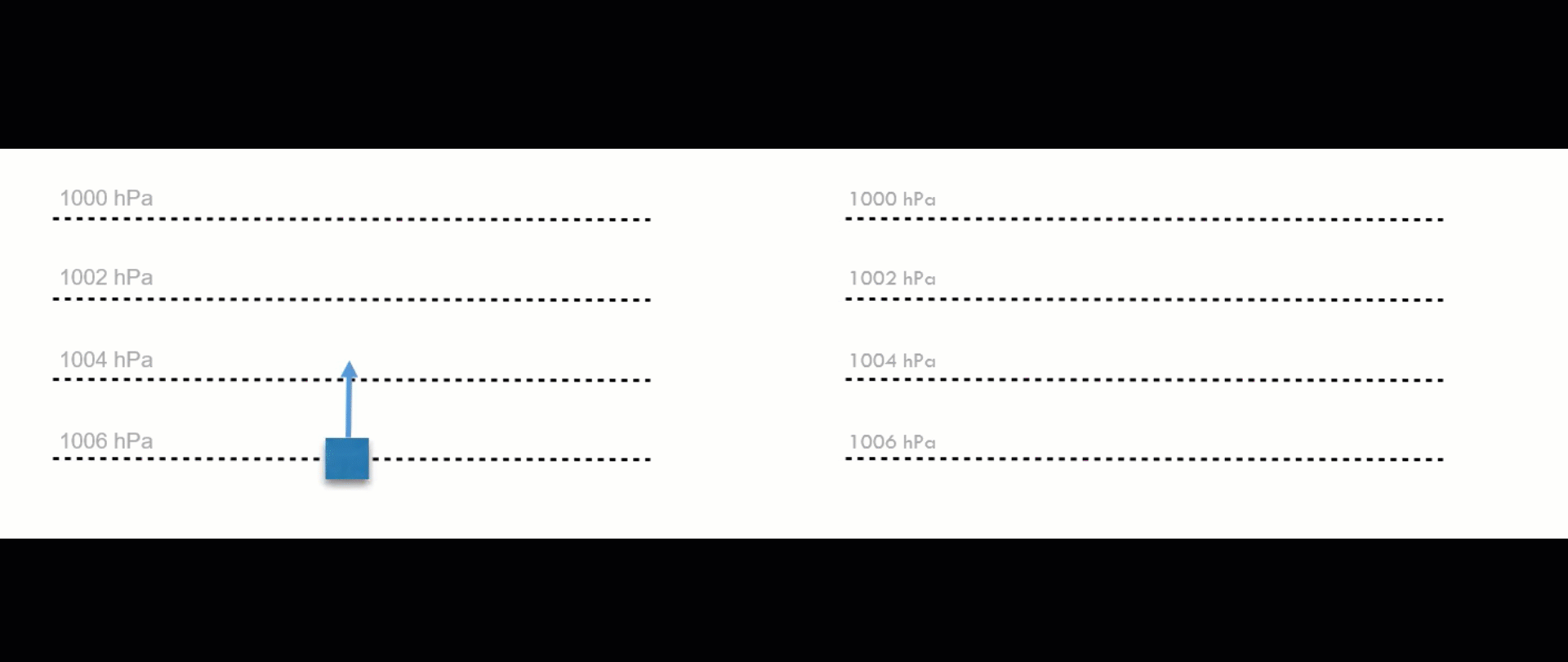
Frictional force
- Friction (aka drag) of air over the Earth’s surface slows the wind.
- Effect is greatest near the surface
- Since the Coriolis is a function of wind speed:
- Coriolis force is weaker near the surface
- Deflection due to Coriolis force is greater aloft
Effects of Friction on Wind
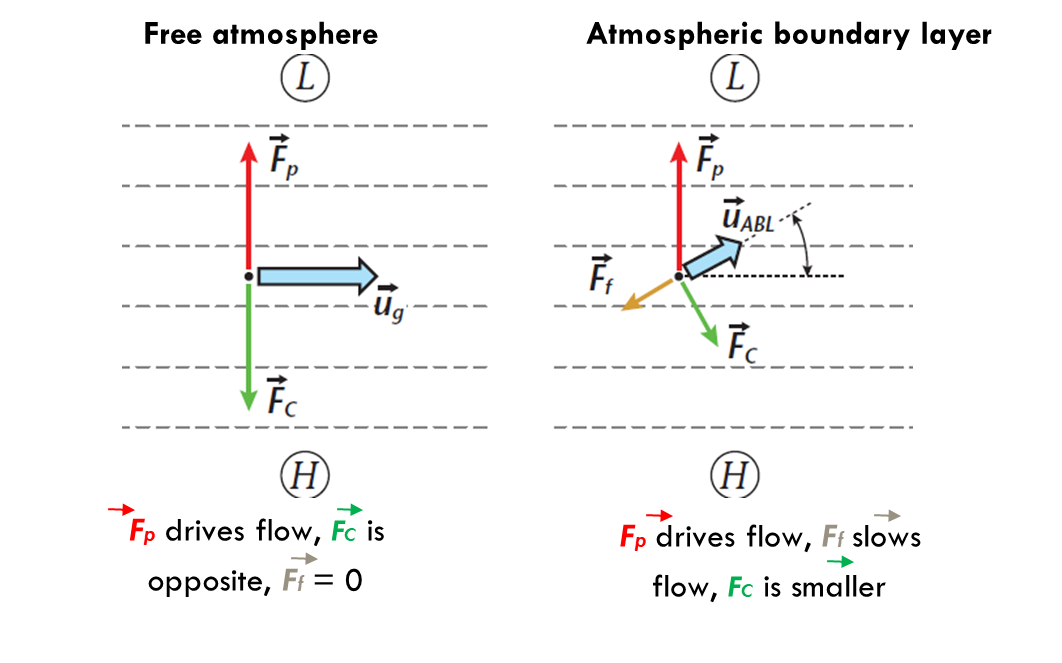
An idealized example showing the effects of pressure gradient (Fp), Coriolis (Fc) and friction (Ff) forces in the “free atmosphere” and near the surface.
Winds in Pressure Systems
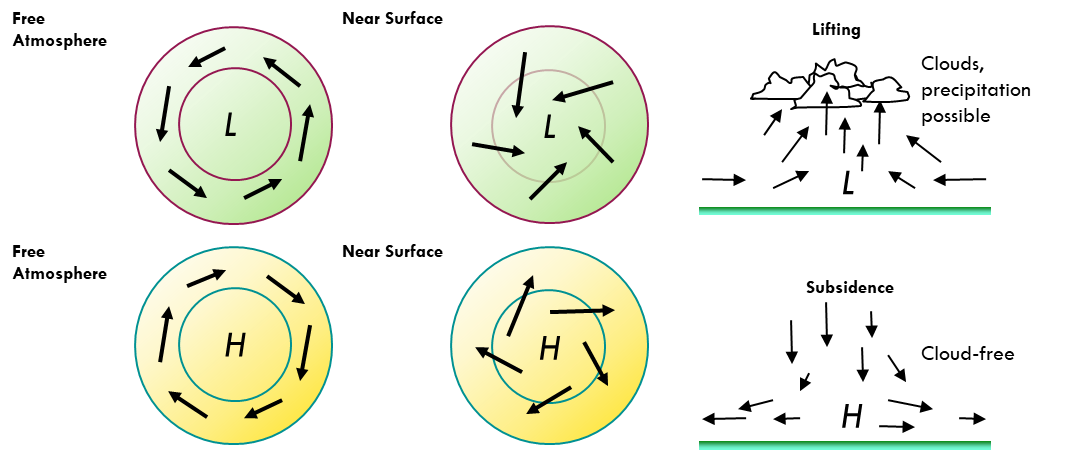
Shown here for the the Northern hemisphere. In the Southern hemisphere, rotation is opposite.
Cyclones
- A cyclone is a large area which experiences rotating winds, which circle around the lowest pressure
- Winds circle in anti-clockwise direction on the northern hemisphere, and in clockwise direction on the Southern hemisphere
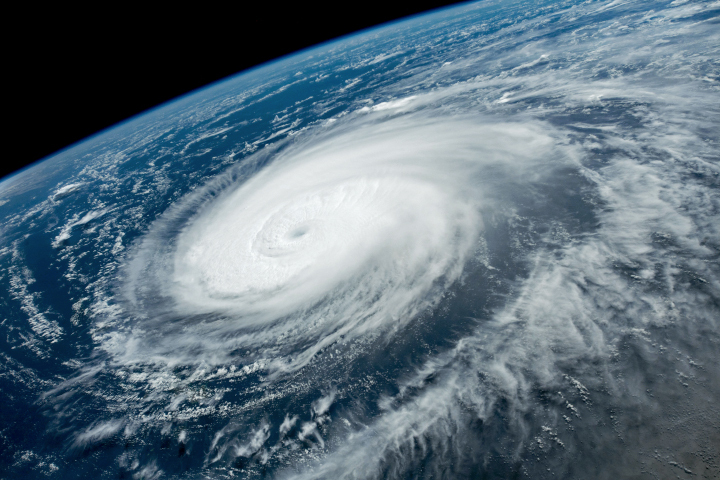
Anticyclones
- An anticyclone is a large area which experiences rotating winds, circling around the region with high pressure.
- Winds circle in clockwise direction on the northern hemisphere, and in anti-clockwise direction on the southern hemisphere.
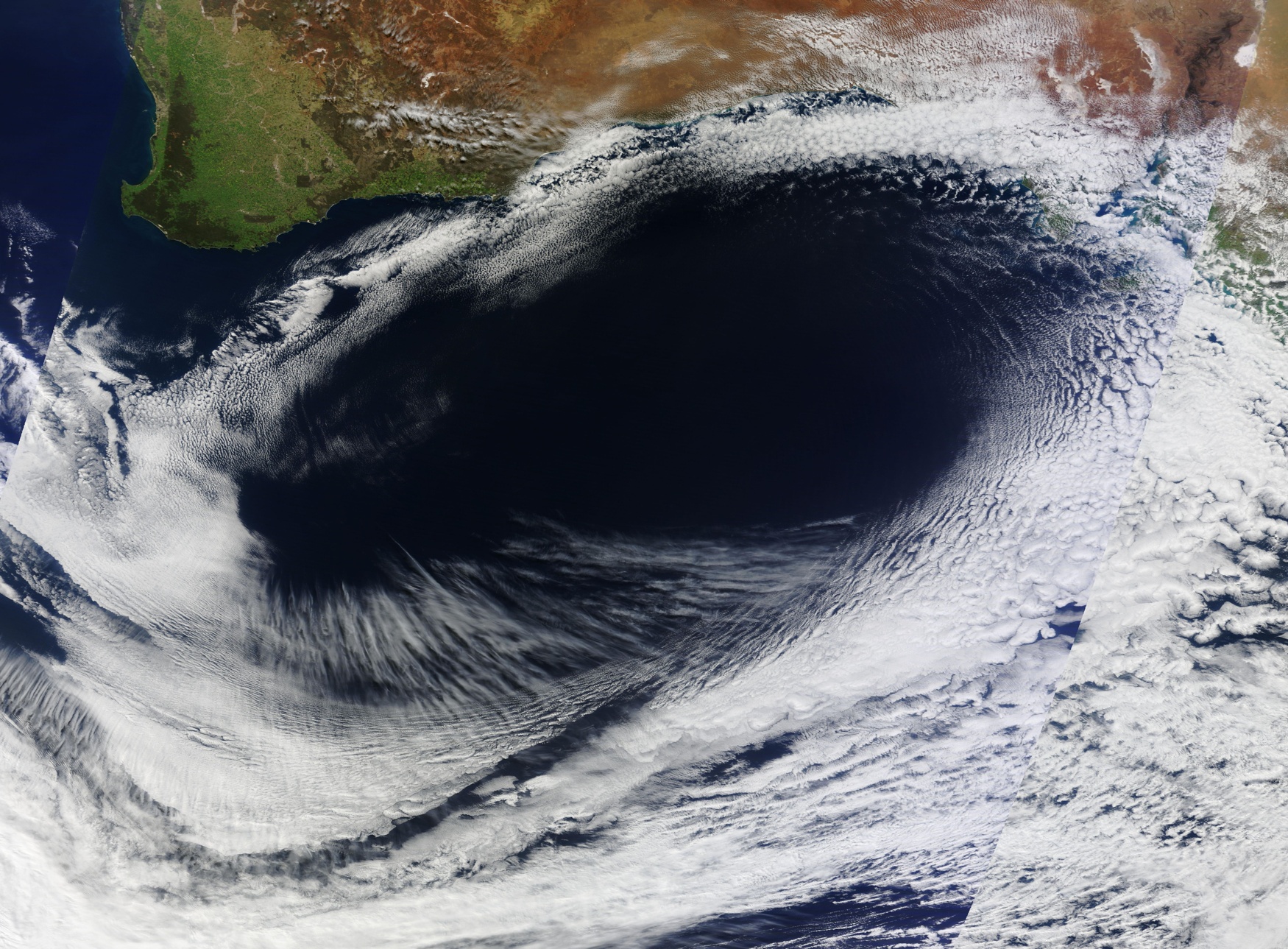
Explore for Yourself
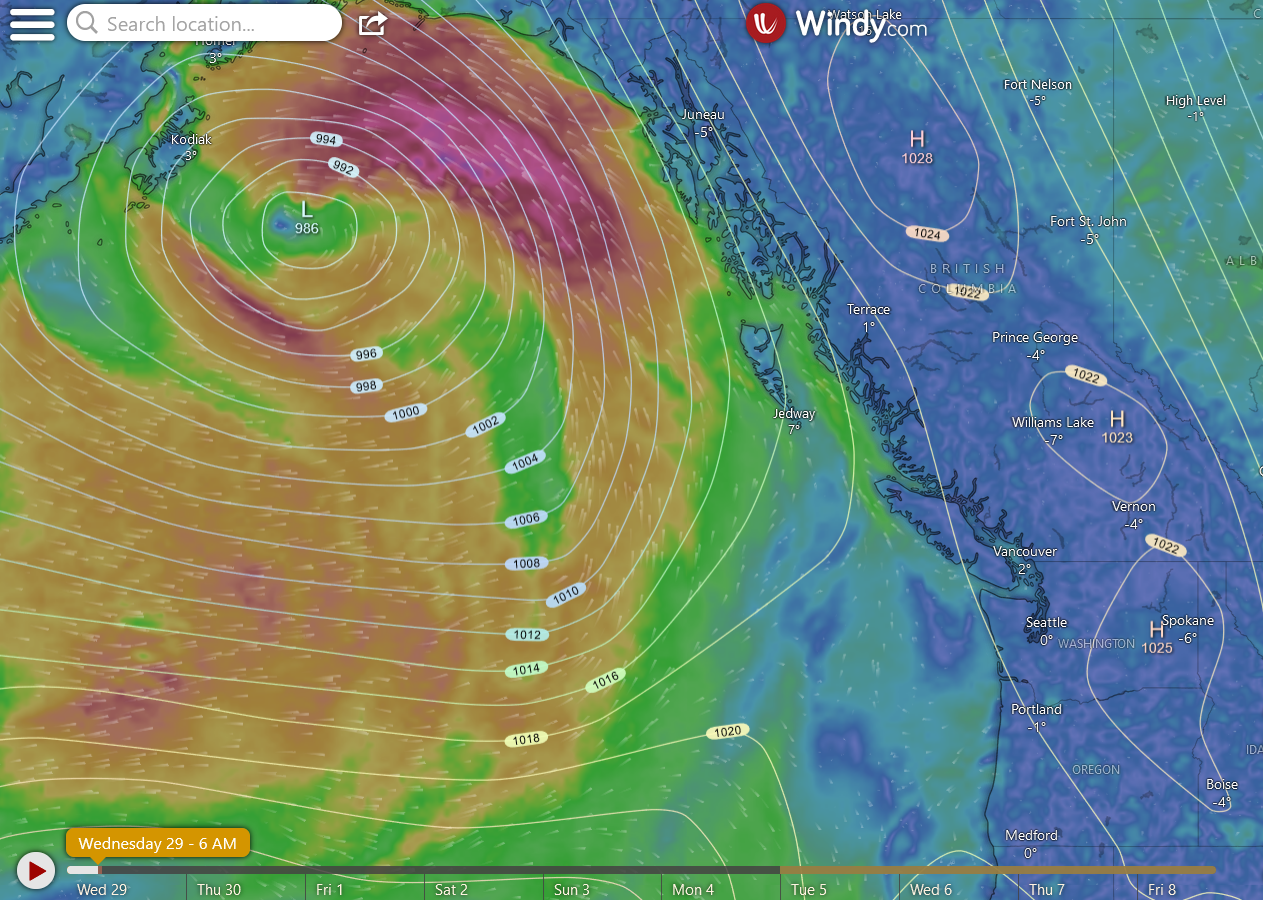
Figure 1: Windy.com is a fun tool you can use to explore for yourself.
Take home points
- Winds are caused by the pressure gradient force which is equalizing horizontal pressure differences.
- Once in motion, the Coriolis force and friction act, causing deflection and slowing of the wind.
- On a global scale the energy transport is deflected, creating three distinct cells (Hadley, Ferrel and Polar cell) in each hemisphere.
- On a smaller scale it creates thermal lows and highs (cyclones and anticyclones).